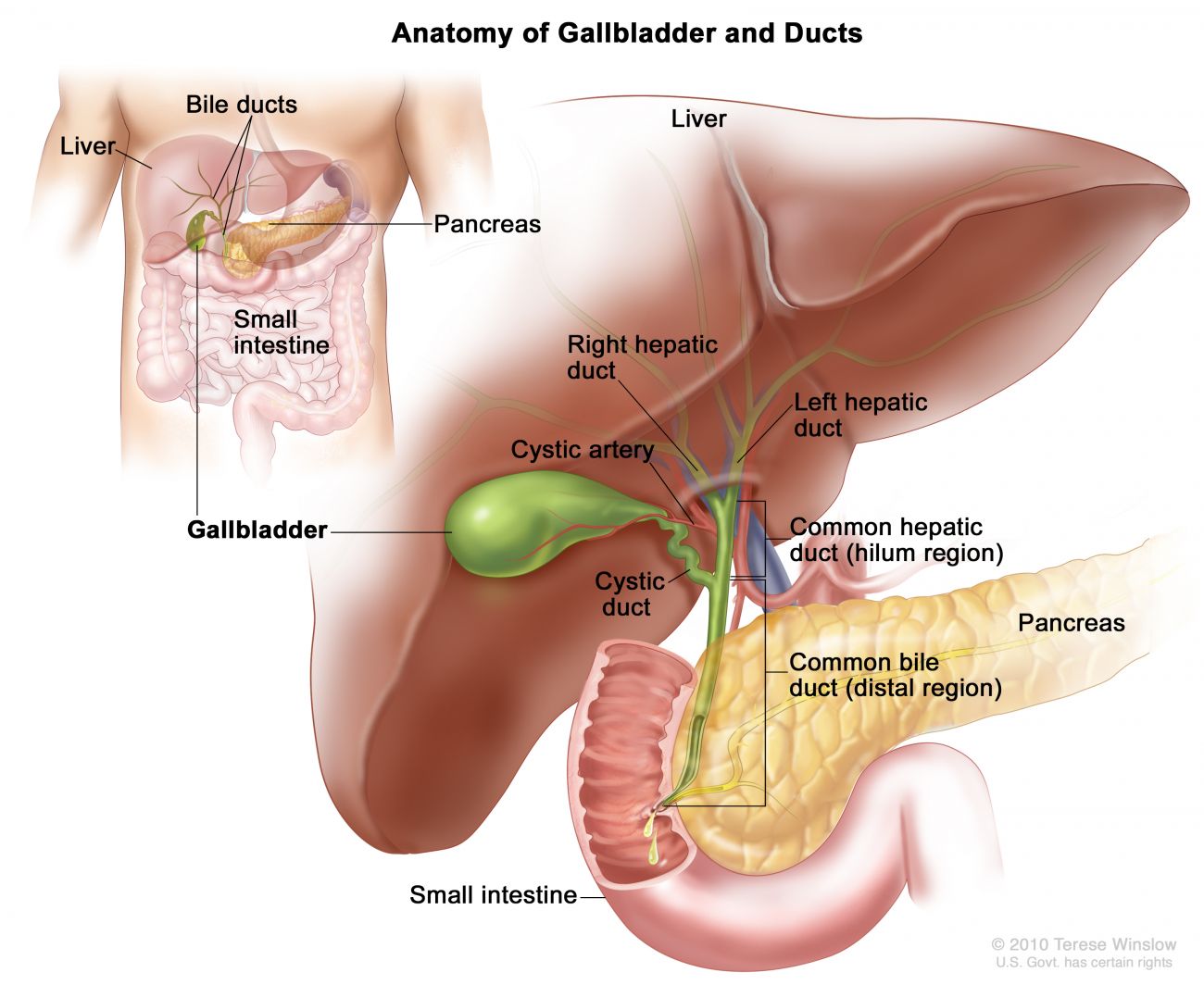Your gallbladder is a small, pear-shaped organ lying beneath the liver that collects and stores bile (a fluid necessary for digestion of fats) that your liver produces. As the liver makes bile, it flows through the bile ducts, a network of tubes that converge and lead to the small intestine to help with digestion, or to the gallbladder to store for later use. When bile is needed, it’s released from the gallbladder to flow through the cystic duct to the common bile duct and on to the small intestine. The gallbladder and bile ducts together make up your biliary system.
About 11,900 new cases of biliary cancer are diagnosed in the U.S. each year and 4 in 10 of those are gallbladder cancer.
Cholangiocarcinoma is cancer in the bile ducts, and occurs when cells in any of the ducts become malignant.
Gallbladder cancer occurs when cells in the gallbladder begin to grow abnormally and out of control, called malignant. The gallbladder is made of three main layers of tissue:
- mucosal (inner) layer
- muscularis (middle) layer
- serosal (outer) layer
Gallbladder cancer typically begins in the innermost, mucosal layer and spreads outward as it grows.
The gallbladder and bile ducts are intricately connected — physically and in their function — to your liver and pancreas. Cancers in these important organs, called hepatopancreaticobiliary (HPB) cancers, are rare and complex and require unique expertise from different medical specialties. At Roswell Park, these specialists are brought together in one center dedicated to caring for patients with HPB cancers, to provide not only the best possible treatments, but to do so in the optimal sequence and coordination that benefits patient survival and quality of life.
